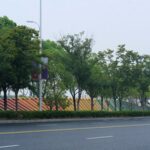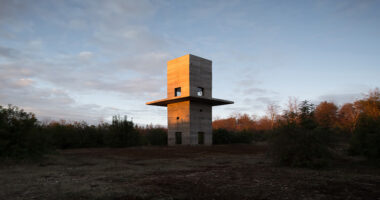Situated along the south bank of the Qiantang River in Hangzhou’s Binjiang District, the Sanqiao Asian Games Park stands as a testament to innovative urban design. Spearheaded by the TJAD Original Design Studio, this project represents the culmination of efforts to create a dynamic waterfront that seamlessly integrates urban, cultural, ecological, and intelligent elements. Let’s delve into the transformative journey of this remarkable park.
Conceptual Framework: Blending Tradition and Modernity
At its core, the Sanqiao Asian Games Park embodies a vision of inclusivity and progress. As a pivotal component of the 12-kilometer waterfront renovation initiative, this project symbolizes Hangzhou’s commitment to hosting a memorable Asian Games while elevating the city’s infrastructure and aesthetic appeal. The design philosophy revolves around the concept of “Asian Games+”—a holistic approach that transcends mere functionality to embrace cultural richness and environmental sustainability.

The “Orange-Blue Ribbon” Experience
Central to the park’s design narrative is the integration of the “orange-blue ribbon” motif—a metaphorical representation of fluidity and connectivity. By weaving together various elements along the waterfront, including elevated running tracks, urban landscapes, and architectural forms, the park fosters a multi-dimensional experience for visitors. This approach blurs the boundaries between traditional public spaces and dynamic urban environments, offering a diverse range of recreational and leisure opportunities.
Elevating Flood Prevention: Anlan Trillion Seawall Integration
In response to the imperative of enhancing flood resilience along the Qiantang River, the Sanqiao Asian Games Park incorporates elements of the Anlan trillion seawall project. Through strategic elevation upgrades and the integration of wave-dissipation platforms, the park not only enhances flood protection measures but also elevates the aesthetic and functional appeal of the waterfront. The result is a harmonious fusion of safety, sustainability, and scenic beauty—a testament to the park’s commitment to environmental stewardship.

Celebrating Community Engagement: Urban Slices and Cultural Artifacts
One of the park’s most compelling features is its emphasis on community engagement and cultural enrichment. Through the creation of “urban slices”—integrated spaces that facilitate vegetation, pathways, and recreational amenities—the park fosters a sense of belonging and inclusivity. Additionally, the incorporation of artistic concrete sculptures and prefabricated blue translucent railings serves as a homage to the Asian Games legacy, enriching the visitor experience with elements of art, history, and cultural heritage.
Yundu Station: A Beacon of Connectivity and Innovation
As the centerpiece of the park, Yundu Station exemplifies the convergence of architectural excellence and functional versatility. Designed as a seamless extension of the surrounding landscape, the station serves as a nexus for urban mobility, social interaction, and cultural exchange. Through meticulous structural design and strategic spatial planning, Yundu Station embodies the spirit of innovation and adaptability—qualities that define Hangzhou’s forward-looking approach to urban development.

Conclusion: A Vision for the Future
In summary, the Sanqiao Asian Games Park stands as a testament to the transformative power of urban design. By embracing principles of sustainability, connectivity, and community engagement, this park not only revitalizes the waterfront but also redefines the city’s identity and aspirations. As Hangzhou prepares to host the Asian Games, the park serves as a beacon of progress—a symbol of innovation, inclusivity, and cultural vibrancy. In the years to come, it will continue to inspire generations, fostering a legacy of excellence and resilience in the heart of Hangzhou’s urban landscape.























